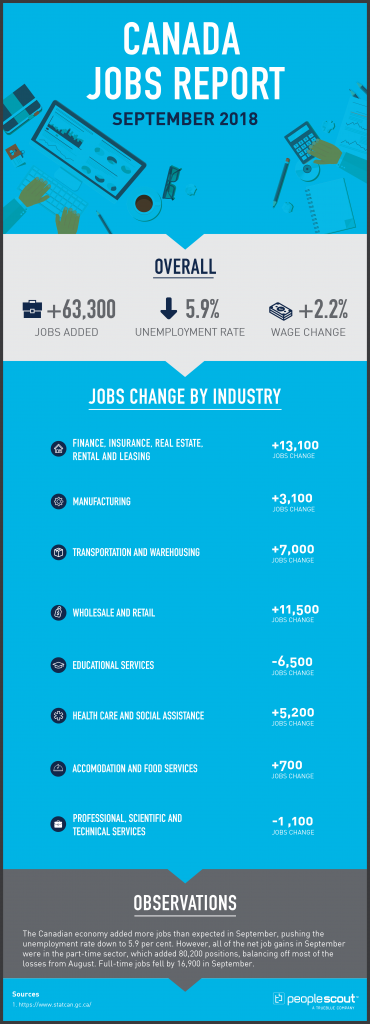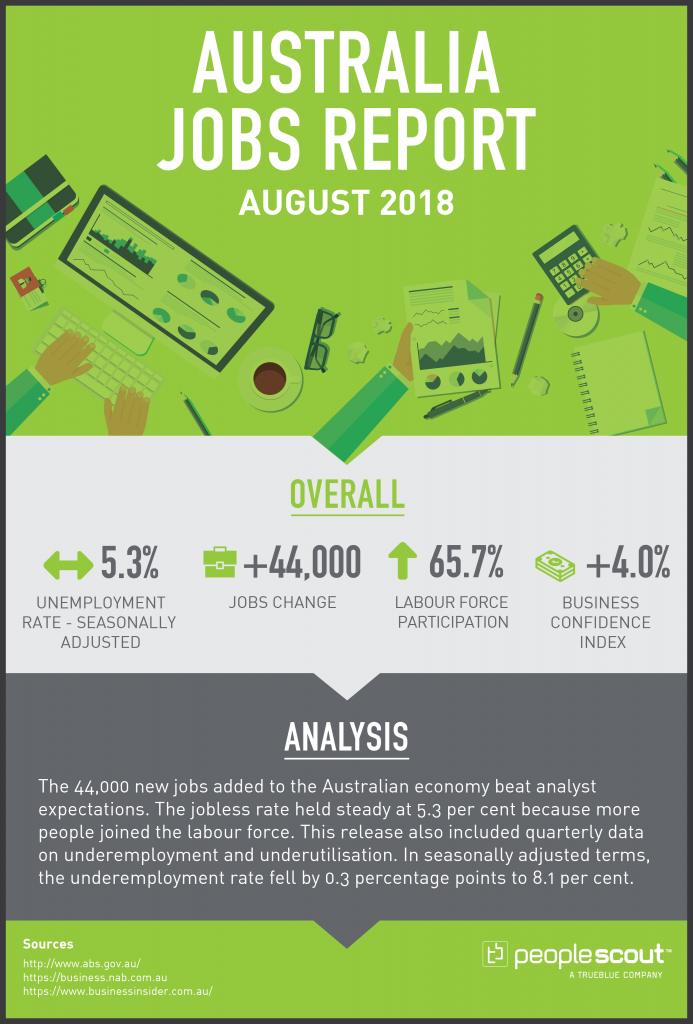Ghosting in the workplace is an increasing concern for employers as the growing trend of candidates who don’t show up to scheduled interviews, don’t arrive on the first day of work or even quit without giving notice rises. This trend is also known as “ghosting” in the workplace.
“As labor markets tighten, recruiters and hiring managers say they’re experiencing a surge of workers no-showing at interviews or accepting a job only to never appear for the first day of work without explanation. Some employees are even quitting by walking out and saying nothing,” wrote LinkedIn’s Chip Cutter in an article on workplace ghosting.
What’s more, an article published by USA Today reports that 20 to 50 percent of job applicants and workers are pulling no-shows or ghosting in some form or fashion.
The ghosting phenomenon is global. “I thought it could only be in pockets of a country like the U.S., where the unemployment rate has sunk to an 18-year low,” wrote Pilita Clark in an article in the Financial Times. “When I asked around in the UK, where unemployment is at its lowest in over 40 years, I found a surprising number of victims of what is known in the online dating world as ‘ghosting.’”
To further explain what ghosting is, why it’s occurring and what your organization can do to minimize its effects on your talent acquisition program, we explore the phenomenon and its effects on employers.
So, What is Ghosting in the Workplace?
In the dating world, “ghosting” is the practice of ending a relationship by stopping all contact and communication with a partner without apparent warning or explanation.
The discourteous act of ghosting is no longer confined to romance; it has now entered the world of work.
Ghosting in the workplace is similar to ghosting in dating. Essentially, candidates or employees avoid having potentially unpleasant conversations with recruiters or their employers by going radio silent instead.
Instead of telling employers, “I am quitting” or “I have accepted another job offer,” some workers are thinking: “If I ignore you long enough, eventually you will take the hint and leave me alone.”
Simply put, many job seekers do not want to have an uncomfortable conversation with a recruiter or manager, so they take the easy way out by ghosting them. Ghosting in the workplace comes in many forms including:
- No-Showing for an Interview. This occurs when candidates do not show up to scheduled interviews. This can happen for initial interviews, or interviews further along in the hiring process.
- No-Showing on the First Day. This occurs when candidates accept a job offer but don’t show up on their start date.
- Quitting Without Notice. This occurs when an employee leaves for the day and is never heard from again.
While job candidates and employees have ghosted in the past, what’s unique now is the practice has now become more prevalent. According to a survey conducted by Washington-based research firm Clutch, 71 percent of workers admitted to ghosting at some point in the application process. What’s more, 55 percent of the respondents said they abandon one to five applications during a job search.
Why are Workers Ghosting in the Workplace?
Some experts believe it is due to changing candidate attitudes and others believe it is a result of the booming job market and historically low unemployment. Whatever the cause, ghosting in the workplace is becoming one of the top issues talent acquisition professionals face in today’s talent market.
Change in Candidate Attitudes
In an interview with the New York Post, Rob Bralow, owner of BLVD Wine Bar in Long Island says he schedules interviews back to back because the majority of applicants simply ghost the interview.
“If I have 10 people who have confirmed interviews in a day, and three people show up, I’m happy,” Bralow says. “And we’re talking about all pay grades and positions. It doesn’t matter what the pay scale is. I’ve had ghosts [no-shows] for $50,000 to $70,000 jobs, and I’ve had ghosts for minimum wage jobs.”
Clutch’s survey found 41 percent of workers found it acceptable to ghost employers, while 35 percent found it unreasonable for an organization to ghost an applicant. Clutch also found that of the workers that found ghosting acceptable, the most common reasons include accepting another job offer (30 percent) or deciding the role was not a good match (19 percent).
Improved Economy and Opportunities
Ghosting employers is not just a symptom of shifting attitudes in the workforce. It can also be the result of low unemployment.
At the height of the Great Recession, the unemployment rate reached 10 percent in the U.S. During this time, many organizations were inundated by the deluge of applications from job seekers and could not respond to every applicant.
What’s more, the global economy is expected to grow by 3.7 percent in 2018, further driving demand for talent.
As the economy and job market surge, the tables have turned. Employees are at an advantage because it’s a candidate’s job market and they have more employment options than they have in recent years.
In May of 2018, the unemployment rate reached an 18-year low of 3.8 percent. There were more job openings than unemployed workers for just the second month in two decades, according to the United States Department of Labor.
Low unemployment is not confined to the U.S., the unemployment rate in the EU has dropped to 7.1 and in the APAC region at 4.2 percent.
This means that employees have more options for employment and can move quickly from one job to the next, ignore employment offers they choose not to accept or accept multiple offers at once with little perceived negative consequences.
How to Survive Ghosting in the Workplace
Ghosting is not only frustrating for employers and recruiters, it’s also expensive. The Society for Human Resource Management (SHRM) reports the average cost-per-hire for companies is $4,129 and the average time to fill a position is 42 days. Ghosting also causes lost productivity, as hard-to-fill jobs stay open longer than anticipated.
To combat ghosting, employers can implement the following strategies:
Developing a Talent Community Can Curb Employee Ghosting
With ghosting becoming the new normal, it’s essential to be more strategic and build long-term relationships with candidates. One method of building long-term relationships is with talent communities.
Talent communities are ideal for establishing long-term professional relationships with passive talent for future opportunities. This means getting to know the talent landscape and candidates regardless of whether or not they are looking to make a career change immediately.
Developing a talent community requires organizations to shift from reactive recruiting to a more proactive approach. Your organization’s mindset should switch from recruiting to fill an open position to thinking about who your organization should hire in the future.
By sourcing candidates earlier in the hiring process, you have ample time to engage them and develop closer and more personal relationships, reducing their likelihood of ghosting.
Tips for building a talent community include:
- Determine what roles you want to target for your talent community (usually roles with high turnover or roles that are hard-to-fill.)
- Look to past candidates, former employees and interns to build your talent community.
- Source passive candidates by combining various sourcing techniques (e.g. social media, networking events, etc.)
- Engage candidates through recruitment marketing until you have an open role for them.
Building a talent community isn’t a short-term strategy and takes time to develop and nurture, but in the long term the benefits are worth the investment and can help offset ghosting in the workplace.
Ghosting Employers: Evaluate Your Onboarding Process
While candidates ghosting job interviews can be a challenge, candidates who ghost on the first day or who resign their position without notice can wreak havoc on an organization.
To curb and deter this behavior, organizations should start the onboarding process early to build an emotional connection with new hires.
In fact, according to research conducted by Inavero, 77 percent of candidates are willing to accept an offer that is 5 percent lower than their expected offer if the employer created a great impression through the hiring process.
That is important because new hires decide to stay or leave a job within the first three weeks, according to a study by the Wyndhurst Group.
Despite the fact that it can take a year or longer for a new employee to reach full productivity, only 15 percent of organizations extend their onboarding past six months, according to SHRM. If employers want to keep their new hires from ghosting, they should consider extending their onboarding processes through the first year of employment. Here are some ideas for successful onboarding techniques at different key points throughout an employee’s first year.
- Before start date: Prior to a candidate’s first day, reach out with friendly messages welcoming the new employee or sharing an introduction to some of the benefits your organization has to offer.
- On the first day: When the new hire arrives for their first day, be sure they are personally introduced to their coworkers and designate a point of contact who will be readily available to answer questions.
- The first six months: Now that the new hire has learned the ropes, continuous feedback is what is going to help them hone their skills, catch mistakes and take corrective action when needed. This is also a great way to establish rapport and trust with the rest of the team.
- After the first year: After the first year, managers should start having conversations about a new hire’s future within the organization and their career development as a way to show the employee that the organization is invested in their continued success.
Conclusion
No one can say for certain if ghosting in the workplace is a trend that is here to stay or if the emergence of an employer-friendly job market will curb it. But one thing is certain; candidate’s attitudes have changed, so organizations need to take steps to adjust.
By building strong talent communities and engaging new hires early and often, you can better position yourself to reduce the likelihood of candidates and employees ghosting you.






